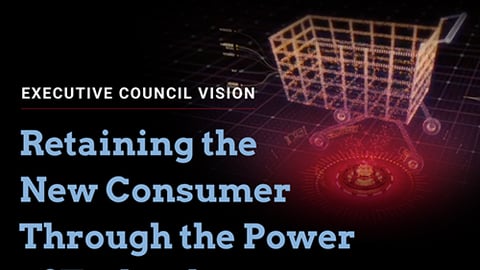Levi’s Doubling Down On AI to Power Demand Forecasting & CX
Social Commerce
Social commerce has become a priority for brands and retailers alike, with social commerce sales in the U.S. expected to reach $36.62 billion, up by 35.8% from 2020, according to eMarketer.
Levi’s held a global virtual festival on May 20 to celebrate the birthday of its 501 jeans. Broadcast from its Instagram account, the festival featured musical performances, conversation with celebrities, and do-it-yourself denim personalization and repair sessions with Levi’s tailors that generated 4 billion impressions.
It also recently launched a global TikTok channel, which generated more than 100 million views in the first six weeks since its launch, and the company held its first shoppable livestream event on Levi.com in the beginning of June.
Levi’s investments in artificial intelligence to improve both customer experience and demand forecasting are paying off, and the company will prioritize its fulfillment capabilities to further leverage stores and distribution centers in order to manage its digital growth.
The apparel brand reported second-quarter net revenue of $1.3 billion, up 148% year over year. Its e-commerce business, which represents 8% of total revenue, grew 37%. Direct-to-consumer net revenue increased 141%, with its company-operated e-commerce business up 42%.
DTC stores comprised nearly 30% of total company net revenues for the quarter, and DTC in general continues to be a tailwind for the company, with gross margin in both stores and e-commerce higher than the company average. About 40% of its business today is DTC, a figure it hopes to get to about 60%, said Levi’s executive VP and CFO Harmit Singh
In the Americas, Q2 revenue jumped 150% year over year, with total revenues from brick-and-mortar stores nearly reaching 2019 levels. Singh described the U.S. business as being structurally stronger than pre-pandemic thanks to a larger digital business, higher share of revenues with financially healthier and more premium customers, more full-price sales, pricing power and higher retail productivity.
To manage this digital growth, the No. 93 consumer goods company is expanding its fulfillment capabilities, and its largest distribution center in Henderson, NV, earlier this month became its first owned-and-operated facility to fulfill orders for e-commerce, retail and wholesale channels.
“Over time we expect to increasingly leverage our owned DCs to fulfill e-commerce orders, which will drive more agility and inventory positioning, reduce lead times and accelerate expansion of e-commerce margins,” said Chip Bergh, Levi’s president and CEO.
As part of this, it’s also enhanced buy-online-pickup-in-store with a shop-to-store function on its website, powering an increase in both volume and higher units per transaction. The shop-to-store function will launch on the mobile app in the third quarter.
“Physical stores remain an important part of our business to build awareness and connect with consumers in a meaningful way, including driving higher loyalty member enrollment,” said Bergh, who noted that all U.S. stores now accept PayPal and Venmo. “As traffic to our stores continues to increase, conversion in [average unit retail] remains strong, and we're seeing better full-price sell-throughs.”
Stores also play a key role in managing the returns process: Consumers can currently return merchandise in more than 2,500 drop-off locations within the U.S.
Artificial Intelligence
Levi’s has had success with its AI recommendation engine, which was first developed in 2019 and works in real time to better understand consumers’ online behavioral cues to provide personalized shopping recommendations. The tech is helping create more cohesive and personalized consumer experience on its app and loyalty program, and Levi’s recorded a 20% increase in app downloads vs. the previous quarter, with increases in both average order value and contribution to e-commerce revenue.
The consumer lifetime value and units per transaction of its loyalty members, meanwhile, remained substantially higher than for non-members.
Levi’s is also transforming how it leverages AI in demand forecasting, with results from its first-wave test demonstrating that AI-driven demand forecasting improved accuracy.
“Scaling it should enable more precise inventory investment, lead to less markdowns and clearance, prevent waste, and enhance sustainability, all of which will improve our margins,” said Bergh. “This will be powerful in combination with the ongoing work AI has been contributing to pricing and promotion.”
To manage the labor issues challenging both the retail and consumer goods industries, the company launched a digital upskilling initiative that includes a machine learning and coding bootcamp; by the end of the year, it expects to have upskilled more than 100 employees globally to become data scientists.



